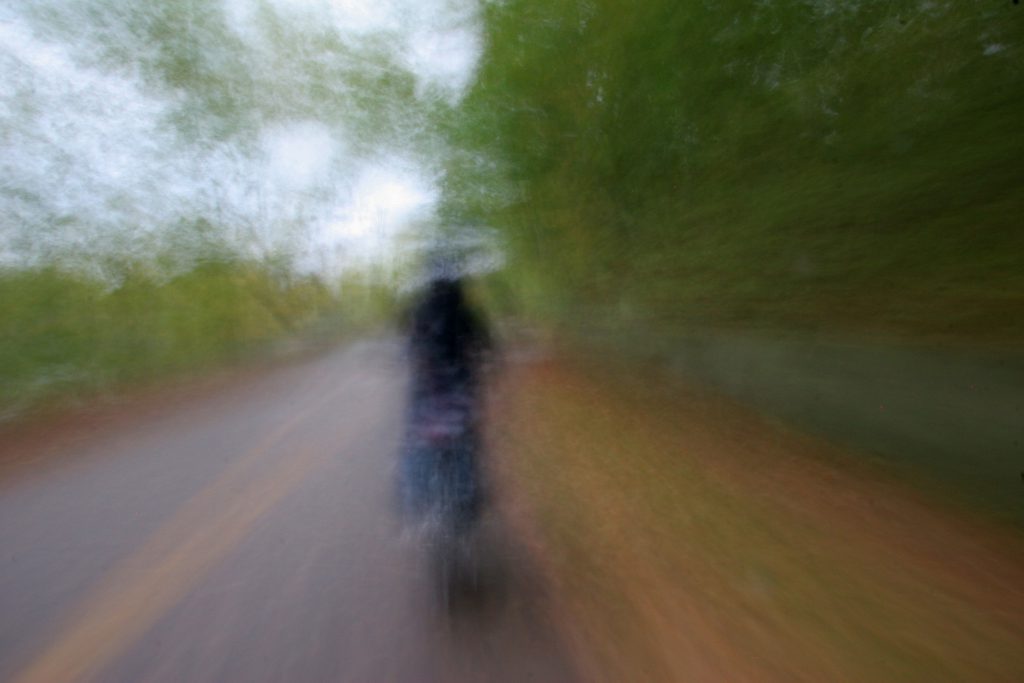Losing the subject, finding the picture (Part 1 of 3)
April 1, 2023 by Bruce W.


Embracing chance events and happy accidents in your photography
Photographs are usually taken for a reason, with a goal in mind, a particular, intended image that we have often pre-visualized. This is a good thing, but fixation on a specific result can blind us to other possibilities and opportunities for image making. We might be shutting ourselves off from potentially exciting results, or hastily narrowing what constitutes a subject worthy of being photographed in the first place. Sometimes a photograph is an answer to the question “How do I shoot X…” What I’m suggesting is that another good question that you can ask is “What happens if I try Y…?”
Let me tell you a story.
It all started with a tiger.
It was May 26, 1986. I was trying to take photos of the tigers at the Toronto Zoo. The light was not good. The closest tiger was pacing back and forth along the wire fence of its shaded enclosure. The shutter speed was on the slow side for handheld shooting with my 50-135mm f3.5 lens, but I took a few shots anyhow, hoping for the best though not expecting a lot. I moved on with my remaining frames of unexposed film in search of more promising creatures that were better lit.
When I got the film back, there were some good shots of the other animals. Nice, crisp, clear. Conventional. And the tigers? Well, on first inspection, those shots hadn’t turned out as I’d desired. Still, one of them did stand out. It had a lot of directional motion blur which paralleled the tiger’s walk. Compared to what I had originally wanted and hoped for, it was, like the others, a failure. What I had wanted was a nice, crisp, clear shot of a tiger. This? This was something different. Looking again, though, it actually worked. In fact, it was arguably better than what I had wanted and had been trying for in the first place. This had caught an aspect of the tiger’s movement, strength, and restless energy that my original, hoped-for result would have missed entirely. For me, this happy accident was an eye-opener, a doorway into new possibilities of photographic exploration and expression.

A happy accident and the start of a new way of seeing (at least for me).
There are many subjects to see, and many ways of seeing any given subject. Expanding the idea of what can be a subject, and how it can be portrayed, gives you more things to shoot and more ways to shoot them. Sometimes each subject, mood, audience, or client calls for a different approach, a different way of capturing and conveying an image. If we needlessly tie ourselves to a strictly literal, naturalistic, documentary approach in instances where such an approach might not be the most appropriate or effective one, we risk missing dynamic, creative images. Taking chances and letting randomness, spontaneity, and unpredictability take a place in your photographic toolbox can offer a fun way to see things differently. Accepting the role of chance events, or actually seeking them out, can give you fresh, surprising photographs.

Working with water in Halifax, Nova Scotia.
On a trip to Halifax the next autumn, reflections in the sunlit harbour caught my attention. Instead of a happy accident, this was a deliberate composition of colour and shape, without any obvious subject but colour and shape. The element of chance was still present as the ever-changing ripples kept the image in constant, liquid motion. I composed the frame’s general arrangement of broad areas of colour, but surrendered the drawing of details to the interplay of light, wind and wave. It was more than a week before I was able to judge the results of this collaboration with chance. Verdict? Success!
Further validation for me of this way of seeing came on the cover of the February 1994 issue of National Geographic. On it was an ethereal, underwater photograph of a baby sea turtle, the flowing kinematics of its energetic swimming stroke captured with a slower shutter speed. Bill Curtsinger’s image was not a typical textbook shot, but was striking and effective precisely because it wasn’t. If National Geographic (which I had always thought of as a staid, solid bastion of documentary images) could do this, then so could I!
In Part 2, I discover the greater freedom to play offered by the Digital Revolution.